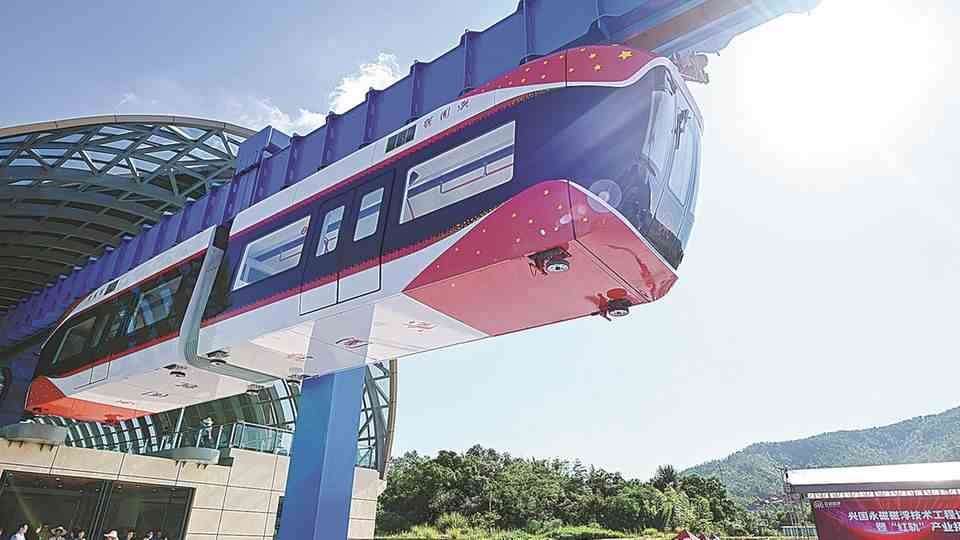Maglev
Levitating cars – China tests highway with magnetic levitation technology
The car was roughly rebuilt and rose 35 millimeters above the road.
©PR
China wants to become the world leader in magnetic levitation trains. After a revolution in floating trains, this technology has now also been tested in cars.
Just a few weeks ago, the test track for a new kind of magnetic levitation train was inaugurated in China. “New” here was the method with which the train was made to float. No coils were used in the “track” that generate a magnetic field with the help of electricity, permanent magnets were used. The idea is obvious, but so far such projects have failed because the magnetic field was too weak and because its strength quickly decreases over time. By adding rare earths, the Chinese managed to create a permanently stable field.
The advantage is obvious. The installation of the “rail” is much easier, it does not require complex electronics, in the end only the magnets are installed. And they don’t consume any electricity when in operation. The train runs smoothly and only needs energy to accelerate.
Magnetic power without power consumption
The principle of permanent magnets is apparently intended to be widely applied. China Daily reports that a car equipped with magnetic levitation technology has been successfully tested on a highway in east China’s Jiangsu Province. The 2.8-ton car hovered 35 millimeters above the road. A second test was later conducted. Eight vehicles were tested on a 7.9 km section of the Autobahn, reaching top speeds of up to 230 km/h.
Lead scientist Professor Deng Zigang said he hopes this technology can help reduce energy consumption and increase the range of cars. In China, you could even set up your own magnetic lane.
China is investing heavily in magnetic levitation technology. The previous systems all work with electrically generated magnetic fields. Contrary to what one might expect, initially no high-speed railways were built, but rather trains for commuters and the local area. In cities, the suspended trains have the advantage that they are quieter than conventional railways and do not generate any vibrations in the environment.
At the same time, research is being carried out in China on magnetic levitation trains that are to travel in a vacuum tube and should be able to reach speeds of over 1000 km/h. The vacuum solves the problem of increasing drag at such high speeds. There are comparable projects in South Korea and Canada. But before that, Beijing wants to install a network of magnetic levitation connections without a vacuum tube. In practice, speeds of around 500 km/h should be reached here. Record speeds can be much higher, but operation in these regions is uneconomical due to high energy consumption. The construction of the trains has already begun. It is assumed that there must be great progress in China in terms of lossless superconductivity – because this would drastically reduce the energy consumption of the route.
Source: China Daily, SCMP




